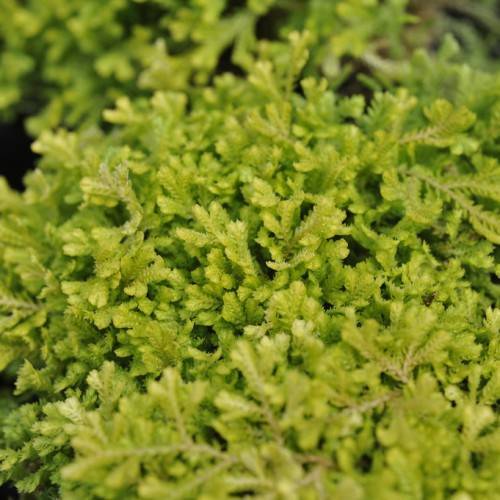
clubmoss
Selaginella kraussiana
Also Known As - Irish moss,spike mossCycle:
Herbaceous Perennial
Watering:
Minimum
Hardiness Zone:
7
Flowers:
Flowers In Autumn
Sun:
Full sun
Soil:
Rocky , gravelly , dry, Well-drained
Fruits:
Fruits In Winter Ready In Fall
Leaf:
Yes
Growth Rate:
High
Salt Tolerant:
Yes
Care Level:
Low
watering
Autumn stonecrop is a drought tolerant plant, but it needs regular watering during its growing season in order to thrive. It should be watered deeply once per week, allowing the soil to dry out slightly between waterings. Water in the morning, avoiding wetting the foliage, and water until the soil is damp down about 8-10 inches deep. During periods of hot weather, the soil should be kept moist for optimal health. It's important not to let the soil dry out completely, as the plant may become stressed and struggle to recover if allowed to dry out too long. Plant mulch around the plant to help the soil retain water.
sunlight
Autumn stonecrop thrives in full sun to partly shaded locations. It prefers 6 to 8 hours of direct sunlight, particularly in the morning and evening. The plant will do best in indirect or filtered sunlight during the middle of the day when the temperatures are at their highest. In order for the plant to produce a bumper crop of the flowers for which it is known, it should receive a good amount of direct sunlight.
pruning
Autumn stonecrop should be pruned in late winter or early spring. Pruning is best done during the dormant season before new growth begins, typically when the plant is still evergreen. Once dormancy has begun, the plant will need significantly less pruning than during the growing season. Pruning should involve the removal of dead or damaged stems, shortening of overly long stems, and shaping to create a full and balanced growth form. Remove enough of the oldest stems to encourage new, younger growth. Cut at the base of the stem to leave behind the flush of leaves, but do not leave excessive stubs, as this can promote fungal development. Be sure to disinfect pruning tools in between uses and use sharp tools for the health of the plant.
